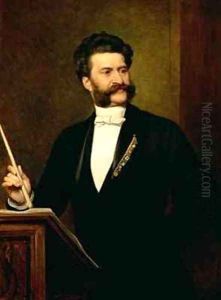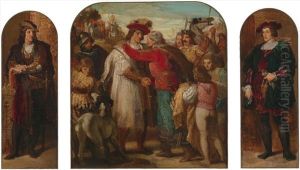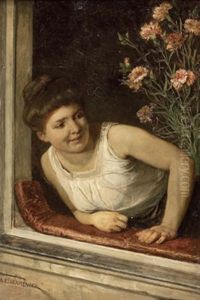August Eisenmenger Paintings
August Eisenmenger was an Austrian academic painter, born on August 27, 1830, in Vienna. He was a part of the 19th-century art movement and is known for his historical paintings and murals that adorned many prominent buildings in Vienna. Eisenmenger received his artistic training at the Academy of Fine Arts Vienna, which was a leading institution for art education in the Habsburg Empire. His education and talent allowed him to develop a style that combined the grandeur of history painting with technical proficiency and a keen eye for detail.
Eisenmenger's career flourished throughout the second half of the 19th century, a period marked by significant cultural and artistic achievements in Vienna. He became a professor at the Academy of Fine Arts in 1872 and influenced many young artists. His works, often characterized by dramatic intensity and vibrant coloration, reflect the academic style of painting that was prevalent at the time. One of his most notable works is the ceiling painting of the Vienna State Opera, which showcases his skill in large-scale compositions and his ability to capture the spirit of the era.
Throughout his career, Eisenmenger received numerous commissions for public and private projects. He was involved in the decoration of many significant buildings, such as the Burgtheater and the Kunsthistorisches Museum, contributing to the rich visual culture of the Austro-Hungarian Empire. His art was part of the decorative program that aimed to represent the glory and history of the empire, a common theme in the monumental art of the period.
Eisenmenger's legacy is not only in the works he left behind but also in the influence he had on subsequent generations of artists. He was part of a milieu that included artists like Hans Makart and Gustav Klimt, who would later break from the academic tradition to form the Vienna Secession. August Eisenmenger died on December 10, 1907, in Vienna, leaving behind a body of work that continues to be appreciated for its historical value and craftsmanship.


